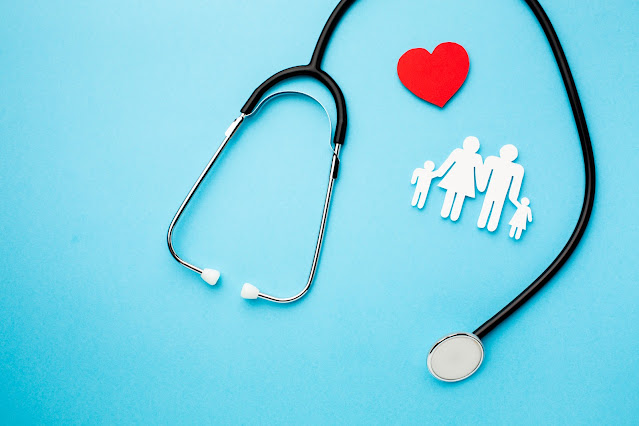Once again, welcome to Nurture Notes! We'll delve into the stethoscope's world and examine all of its applications in today's tour. The stethoscope, one of the most well-known medical instruments, is essential for diagnosing and keeping track of a variety of illnesses. Join us as we walk you through the stethoscope's use in various medical disciplines and provide a thorough review of all of its functions.
👆Unveiling the Marvel of Medicine: The Stethoscope👆
 |
| Image By Freepik |
General Physical Examination
The stethoscope is a crucial piece of equipment for performing a thorough physical examination. Using the stethoscope, doctors listen to the heart and lungs during routine checkups to evaluate their function and identify any anomalies. The use of a stethoscope can help detect heart murmurs, aberrant lung sounds, and other symptoms that could point to underlying medical issues.
Cardiology
The stethoscope becomes a useful tool in the field of cardiology. Cardiologists can hear murmurs, irregular heartbeats, and other symptoms of heart disease by listening to the heart's noises. Furthermore, specialized methods like auscultation of particular regions and employing various stethoscope postures aid in the evaluation of heart valves, blood flow, and the existence of any cardiac anomalies.
Pulmonology
To assess the condition of the respiratory system, pulmonologists frequently use a stethoscope. They can detect aberrant breath sounds, such as wheezing, crackles, or reduced breath sounds, by auscultating the lungs. These results support the diagnosis of respiratory illnesses such as pneumonia, chronic obstructive pulmonary disease (COPD), and asthma. Monitoring lung sounds over time aids in evaluating the efficacy of the treatment and the course of the illness.
Paediatrics
A stethoscope is an essential tool in paediatrics for evaluating the health of new-borns, young children, and teenagers. Paediatricians examine the heart and lungs to listen for cardiac abnormalities at birth, respiratory infections, and other diseases that typically affect kids. The stethoscope is also used to track the growth and development of the respiratory and cardiovascular systems in children.
Obstetrics
Obstetricians use the stethoscope to listen for fetal heartbeats during pregnancy. This promotes the health of the infant and offers vital details about the fetus's heart rate and rhythm. Doppler-enabled stethoscopes enable medical professionals to more clearly amplify and identify fetal heart sounds, even in the earliest stages of pregnancy.
Gastroenterology
The stethoscope can be used by gastroenterologists to listen to bowel sounds, which can reveal information about gastrointestinal motility. Doctors can assess the health of the intestines, find obstructions, or diagnose diseases like ileus or bowel obstructions by listening to these sounds. Vascular bruits in the abdomen, which may be an indication of blood vessel irregularities, are also recognized using stethoscopes.
👆Unveiling the Marvel of Medicine: The Stethoscope👆
Conclusion
In all medical disciplines, a stethoscope is an essential tool that helps medical practitioners assess and diagnose a variety of illnesses. The stethoscope's adaptability and dependability continue to be essential in the medical field, from routine physical examinations to specialized fields like gastroenterology, cardiology, pulmonology, pediatrics, and obstetrics. Understanding how to use this extraordinary tool effectively improves patient care and doctor-patient interaction.
We hope this extensive overview has clarified the various uses for the stethoscope. For more in-depth essays on medical themes, keep checking Nurture Notes. The stethoscope, which represents a connection between medical personnel and their patients and fosters trust, empathy, and compassionate care, should always be kept in mind as more than just a tool.


Very nice
ReplyDeleteGud
ReplyDeleteNice👌
ReplyDelete